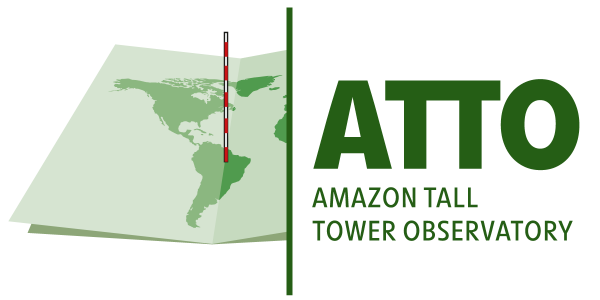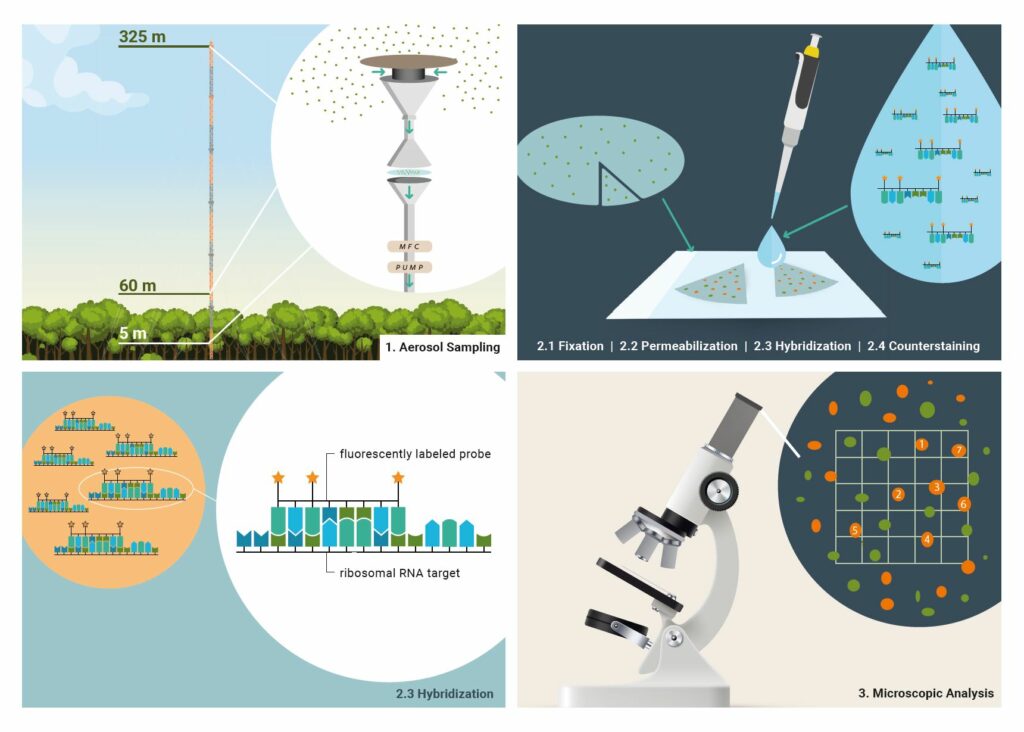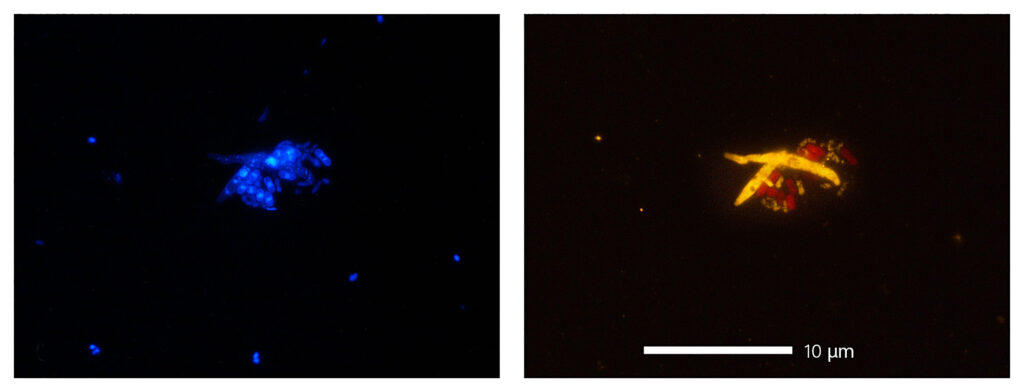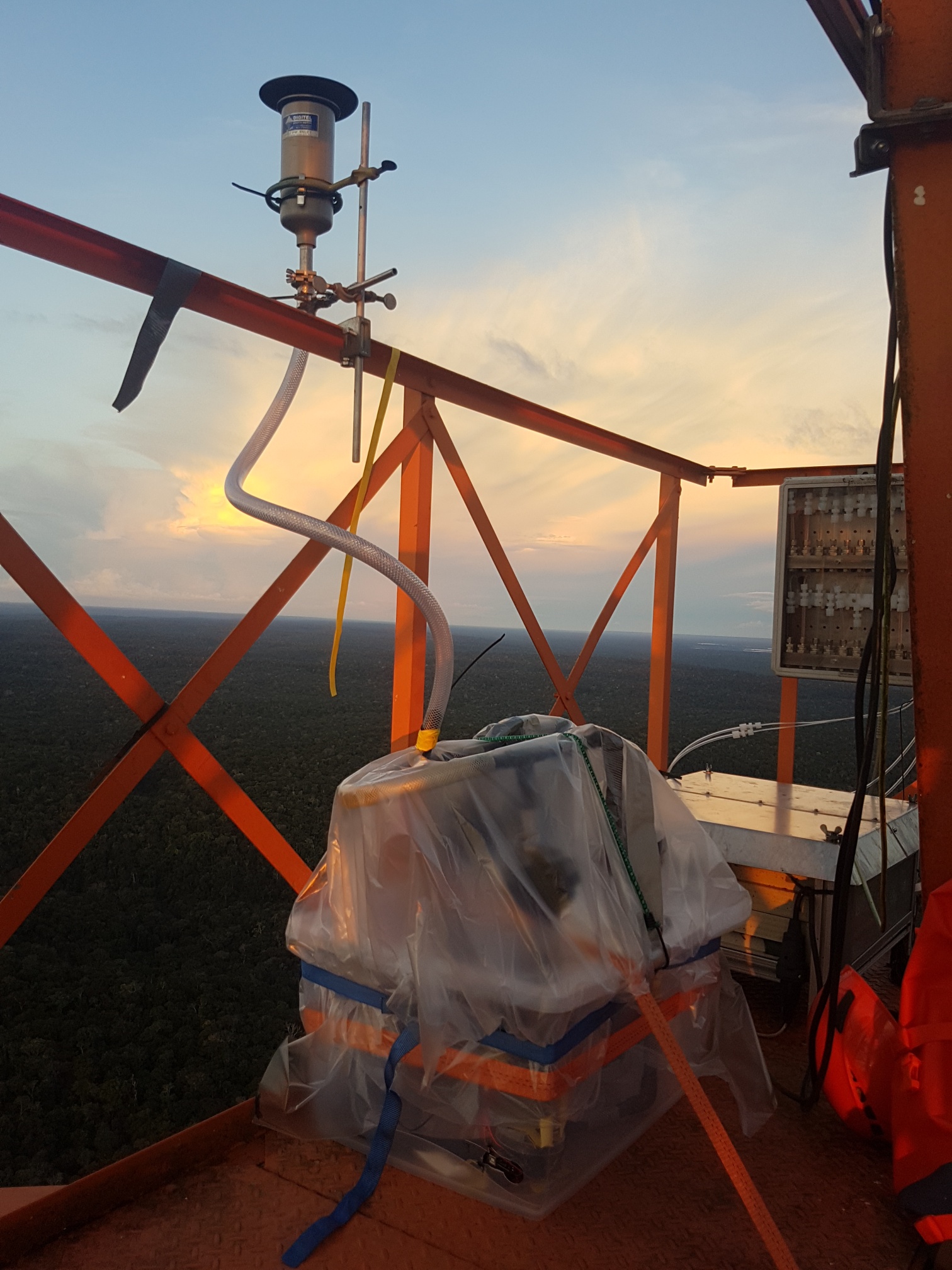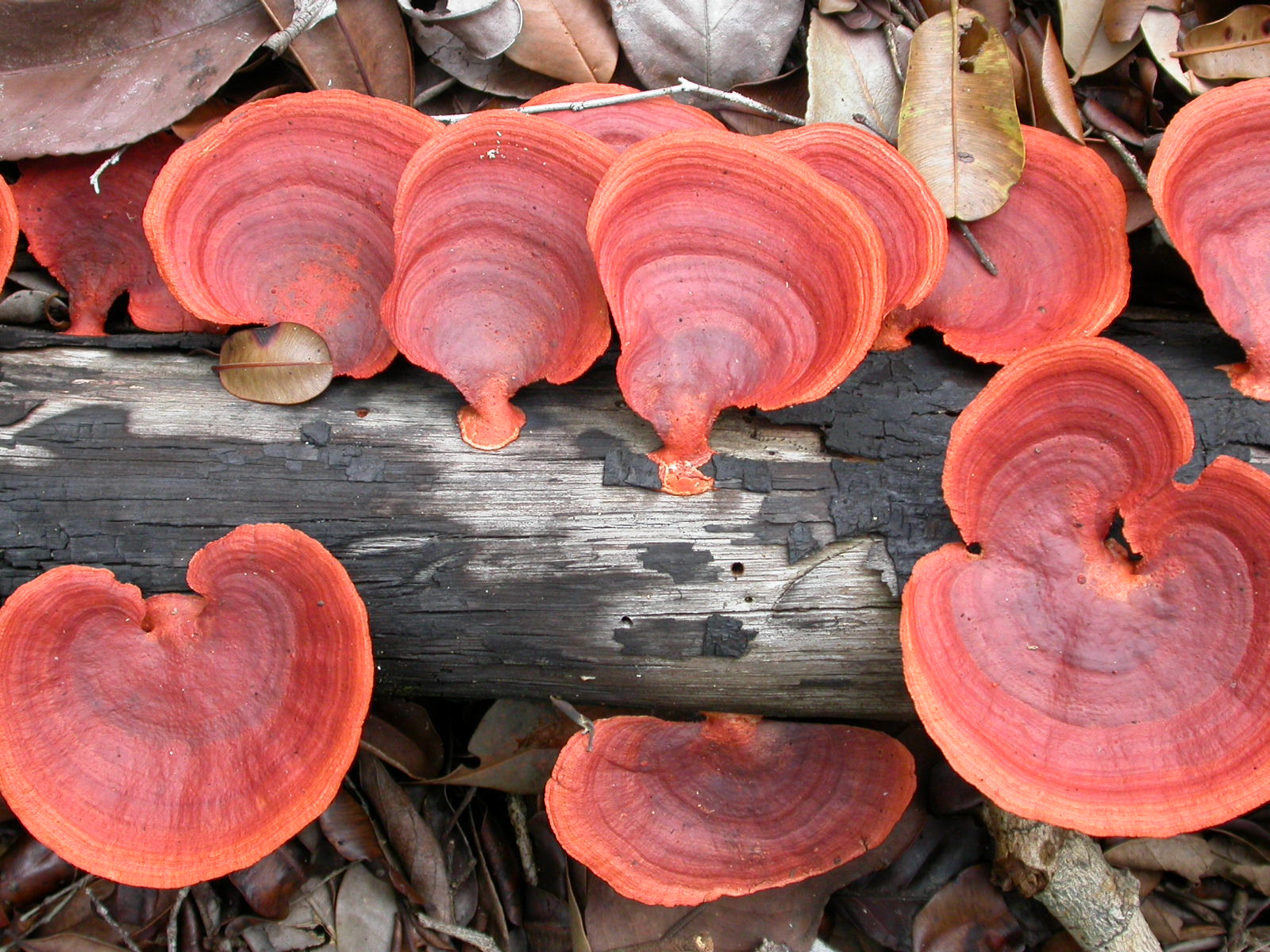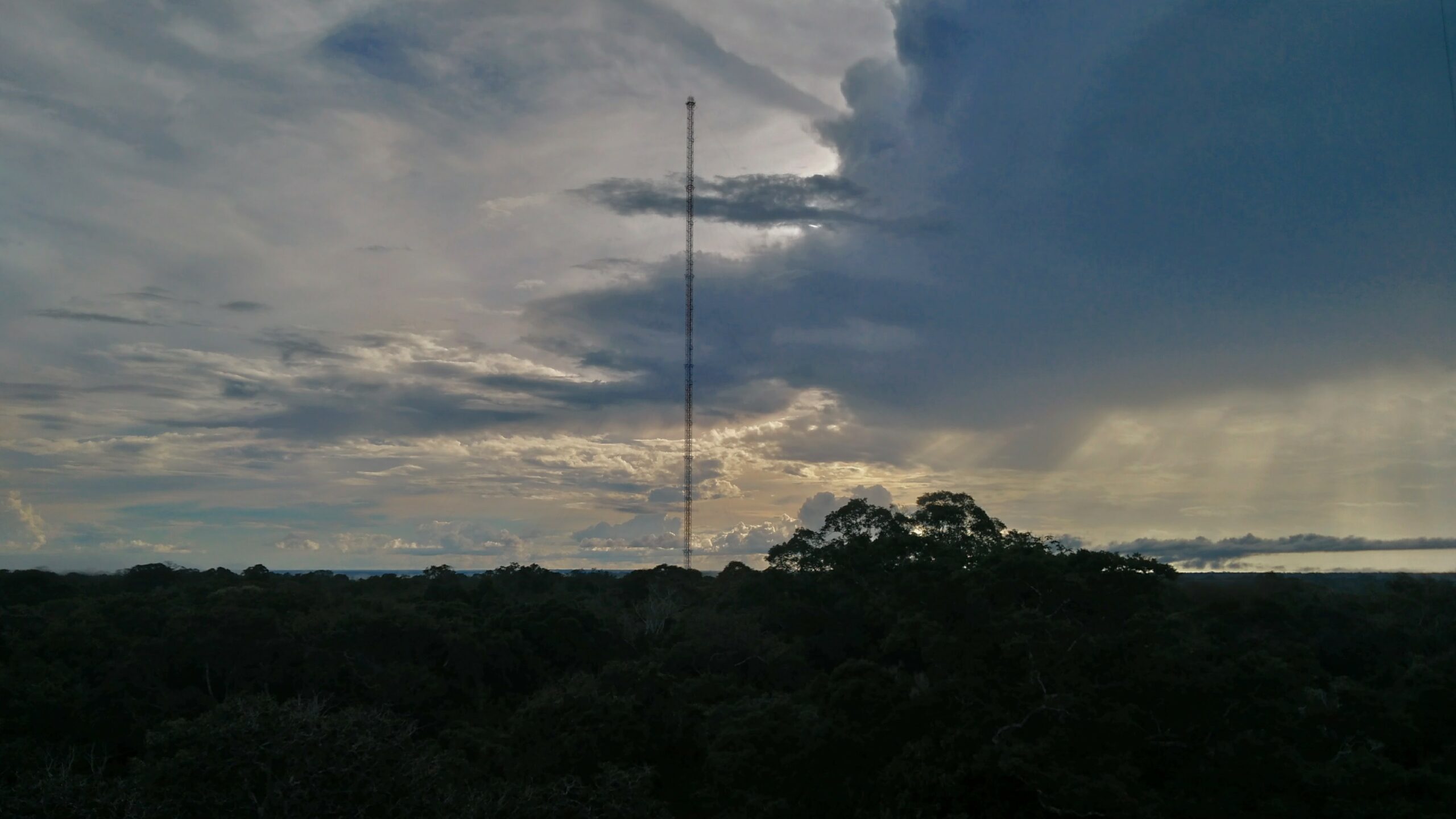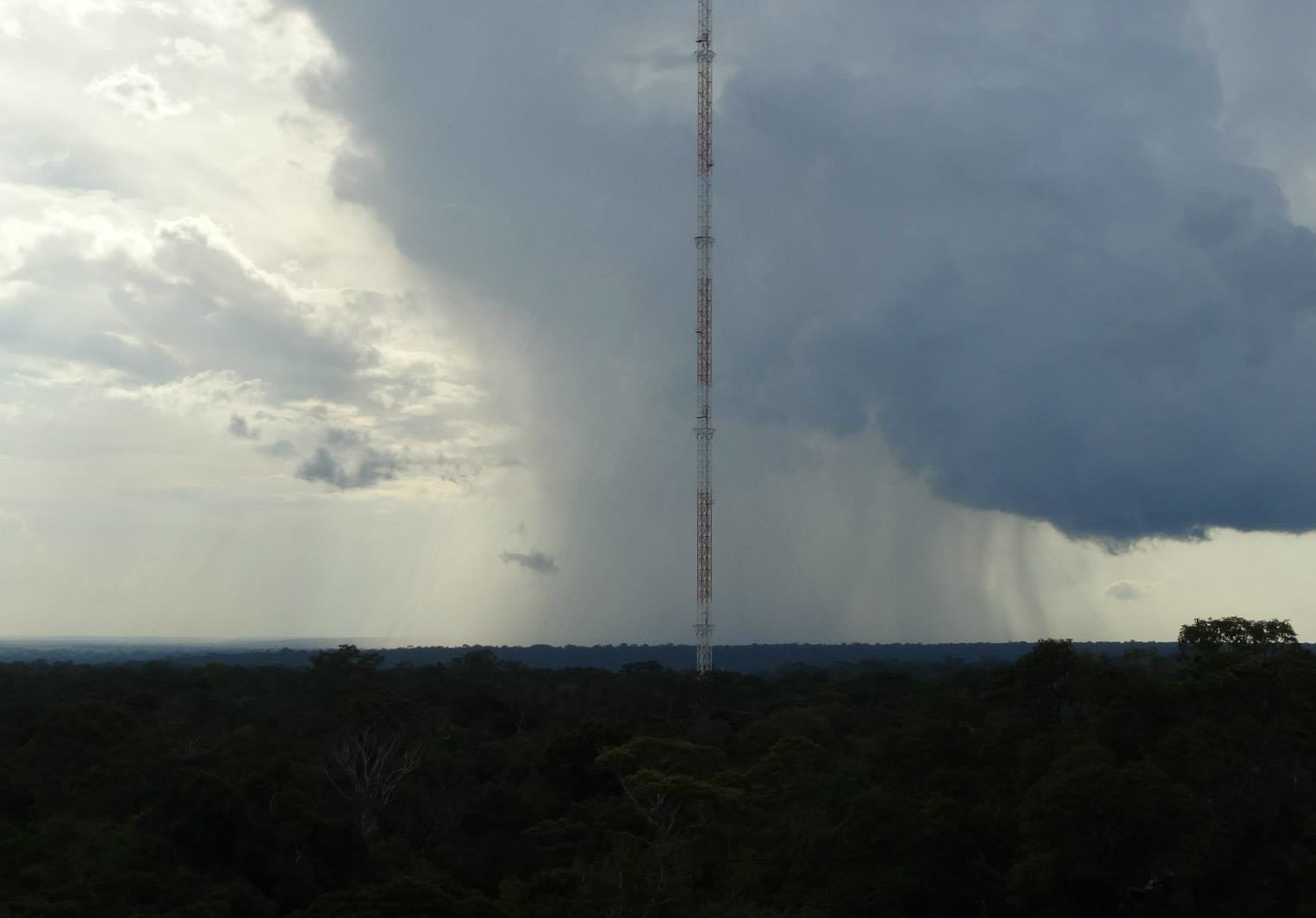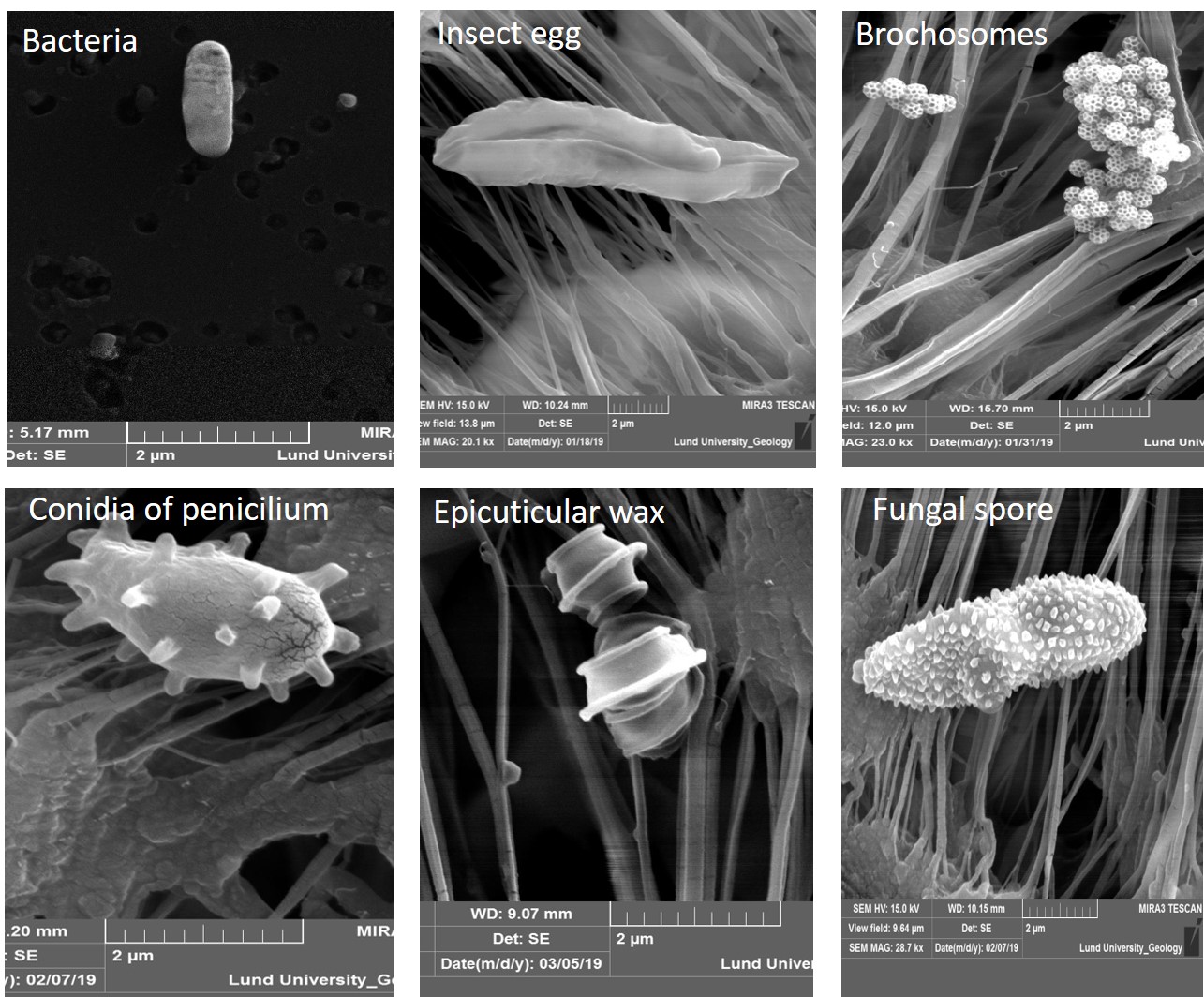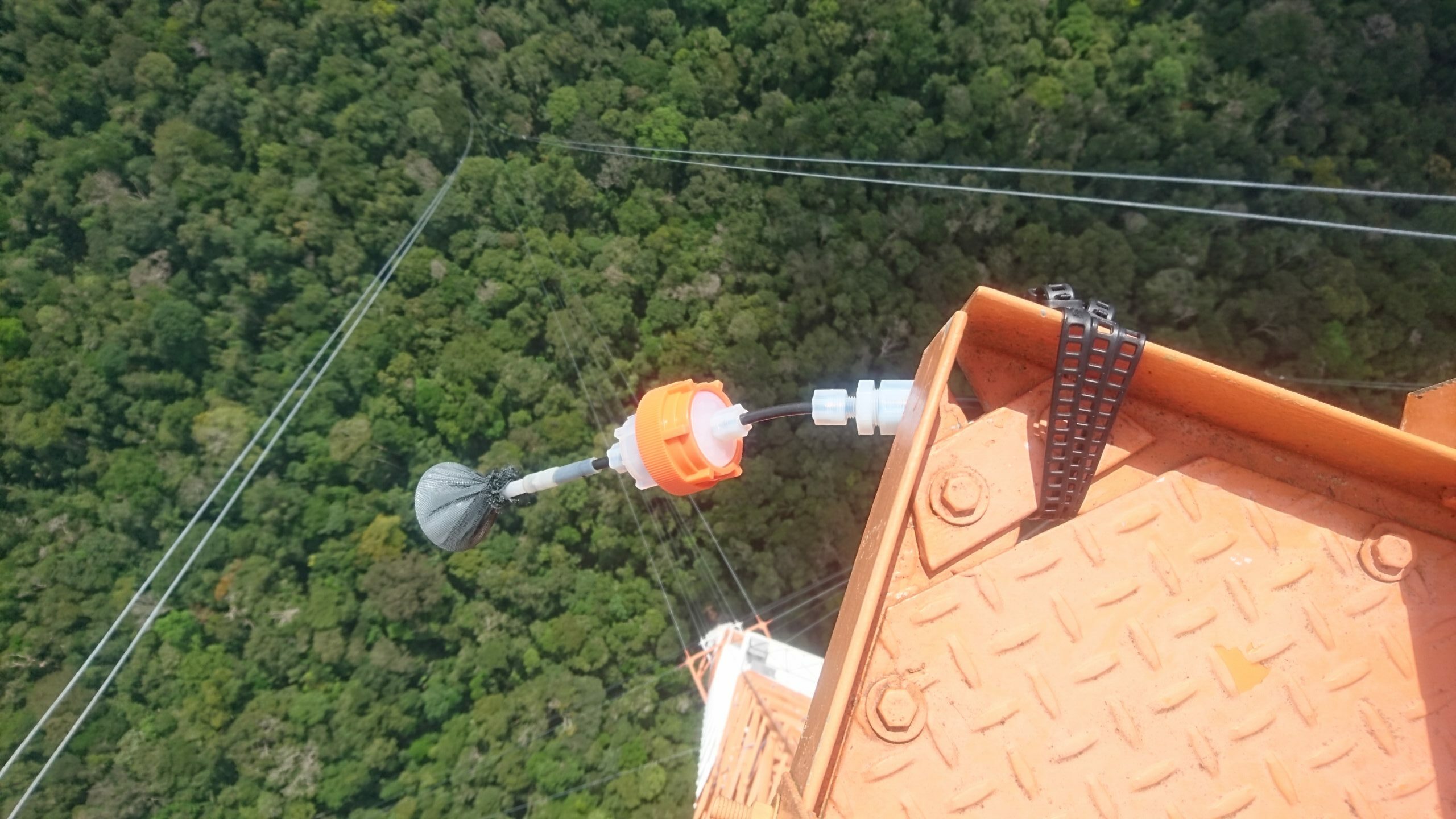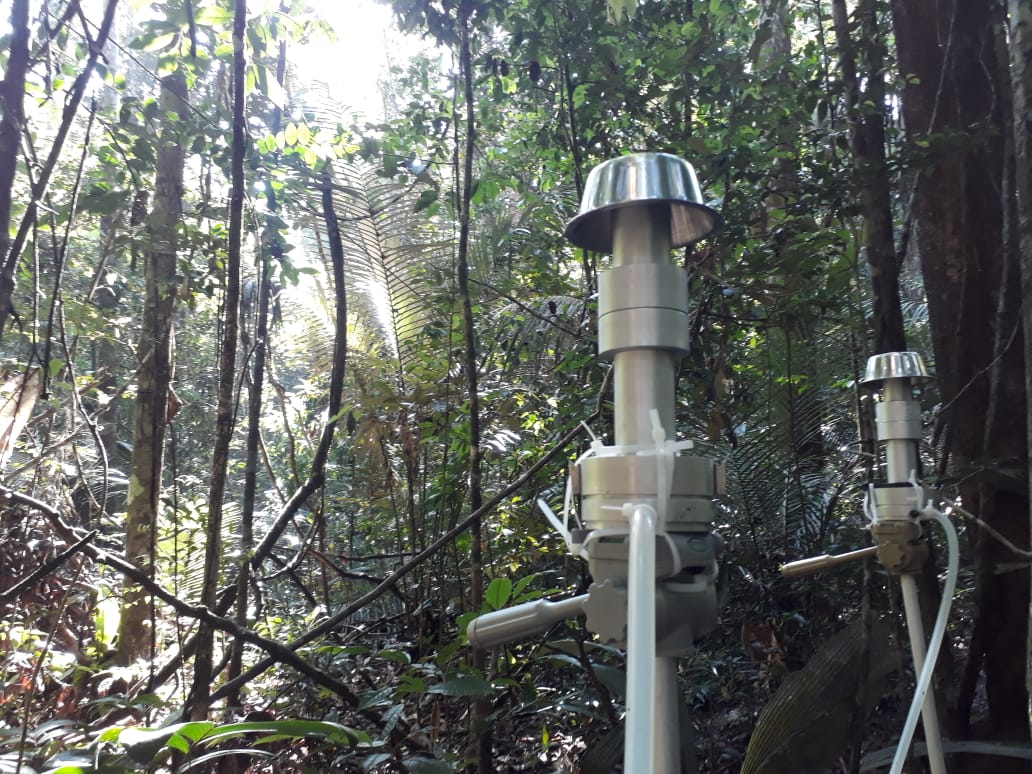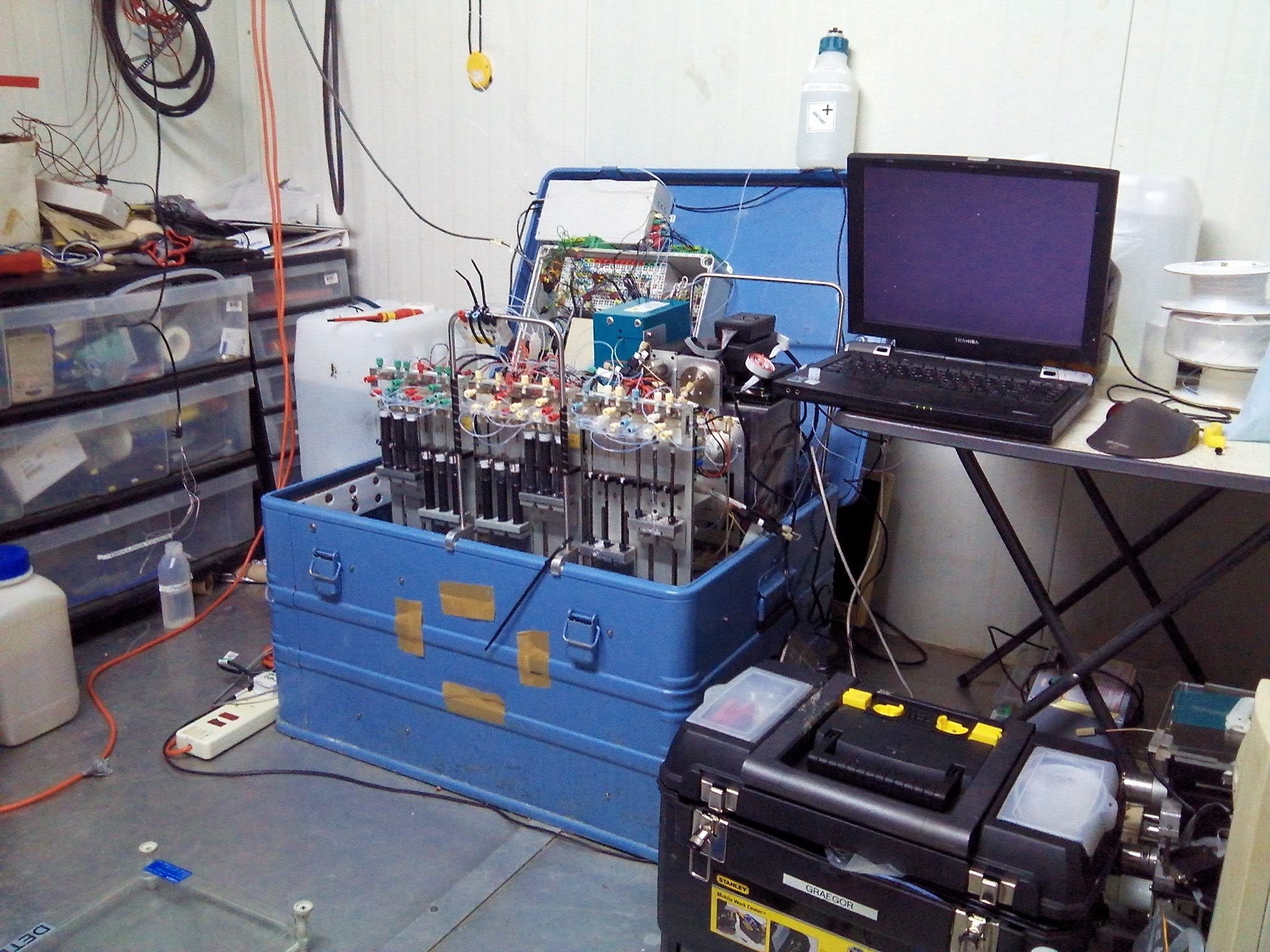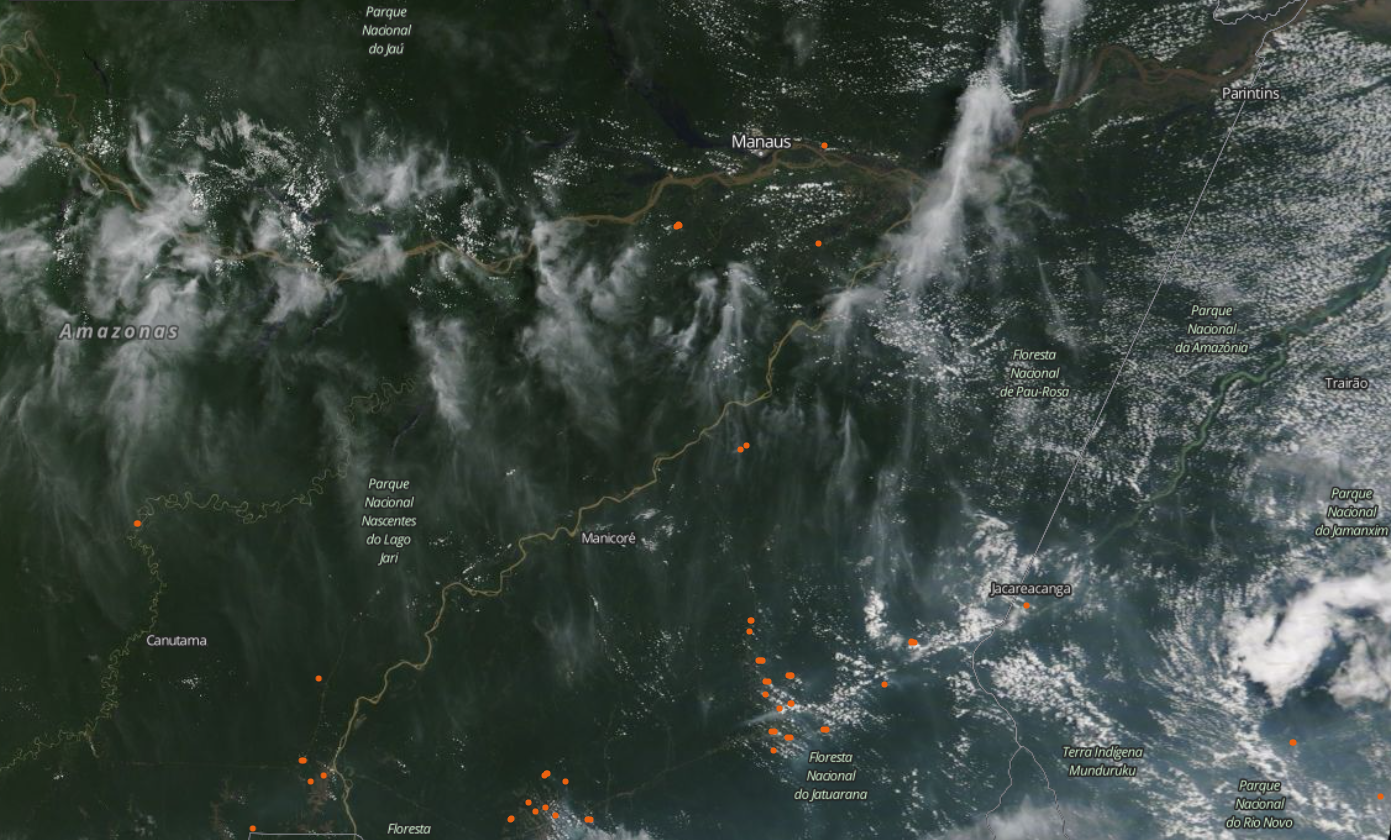The Amazon rain forest plays a major role in global hydrological cycling. Biogenic aerosols, such as pollen, fungi, and spores likely influence the formation of clouds and precipitation. However, there are many different types of bioaerosols. The particles vary considerably in size, morphology, mixing state, as well as behavior like hygroscopicity (how much particles attract water) and metabolic activity. Therefore, it is likely that not only the amount of bioaerosols affects the hydrological cycle, but also the types of aerosols present.
FISH-ing for data
Maria Prass, Christopher Pöhlker and their colleagues now wanted to find out which types of bioaerosols are present in the atmosphere above the Amazon Rainforest, and in which quantities. For their new study, they sampled air in the wet season of 2018. They utilized the infrastructure at ATTO to sample at three heights: near the ground at 5 m, above the canopy at 60 m and on top of the tall tower at 325 m. Subsequently, they filtered the air for airborne aerosols.
They wanted to distinguish them on a domain level. Specifically, they looked at three groups: bacteria, archaea (single-celled organisms without a cell nucleus), and eukaryotic cells such as fungi and algae. To achieve this, they used the FISH method. FISH (Fluorescence in situ hybridization) is a molecular genetic technique that enables cell identification by characteristic RNA or DNA sequences combined with fluorescence staining. Maria then looked at the stained particles under a microscope and manually counted them.
The authors found that more than 70% of the aerosols in the analyzed size range were in fact intact cells. Only the remaining 30% were likely fragmented or degenerated biological material. Out of intact 70%, eukaryotic cells dominated bioaerosol numbers, accounting for more than half of all particles. Bacteria were also abundant, accounting for a quarter of all present cells. Archaea on the other hand were very rare. (The remaining particles could not be identified.) Beyond that, they noticed a clear day-to-day variability in the concentrations. For example, bacteria are relatively more abundant on 3 of the 7 days following a strong rain event.
In addition to the variability over time, the scientists also looked at changes in bioaerosol distribution with height. They noticed an overall decrease of aerosol abundance with height and a decrease in particle size. This is likely due to the high abundance of sources within and under the canopy in combination with higher sedimentation tendency and lower atmospheric residence times of large particles. This trend is less pronounced for bacterial cells that are often smaller than spores that were more abundant closer to the ground.
Potential for future studies
Specific bioaerosol numbers generated by Maria and colleagues are the first of their kind for a tropical rainforest environment. They represent the wet season when the atmosphere in that region is almost pristine and largely free of anthropogenic pollution. They can now serve as a reference for future modeling and process studies. Here, they will be useful for studies of climate-relevant forest–atmosphere interactions such as precipitation cycles and the specific impact of bioaerosols. Especially the data from 325 m can serve as an estimate for cells that are being convectively lifted to the cloud base, where they potentially impact cloud formation and evolution processes.
Furthermore, the team could demonstrate the potential of the FISH method for targeting organism classes on different taxonomic levels. In theory, this is possible down to species level. They hope to conduct future studies with FISH in close relation to cloud microphysical process studies. Targeted bioaerosol characterizations during periods of climate extremes, such as El-Niño-related droughts in the Amazon, are of great importance to study the response and resilience of the bioaerosol population in the Amazon under warmer and presumably drier climatic conditions in the future.
Prass et. al. published the study “Bioaerosols in the Amazon rain forest: temporal variations and vertical profiles of Eukarya, Bacteria, and Archaea” Open Access in Biogeochemistry.
Similar articles
More soot particles enter the central Amazon rainforest from brush fires in Africa than from regional fires at certain times.
In a new study, Denis Leppla, Thorsten Hoffmann and their colleagues looked at pinic acid and its chiral forms. Pinic acid forms in the atmosphere through SAO formation from α-pinenes. The team wanted to find out how the chemical reactions in the atmosphere affect the chirality of its product pinic acid.
Bioaerosols influence the dynamics of the biosphere underneath. In a new study, Sylvia Mota de Oliveira and her colleagues used the ATTO site to collect air samples at 300 m above the forest. Then, they used DNA sequencing to analyze the biological components that were present and figure out what species of plant or fungi they belong to. One of the most striking new insights is the stark contrast between the species composition in the near-pristine Amazonian atmosphere compared to urban areas.
In a new study, Marco A. Franco and his colleagues analyzed when and under what conditions aerosols grow to a size relevant for cloud formation. Such growth events are relatively rare in the Amazon rainforest and follow and pronounced diurnal and seasonal cycles. The majority take place during the daytime, and during the wet season. But the team also discovered a few remarkable exceptions.
It is long known that aerosols, directly and indirectly, affect clouds and precipitation. But very few studies have focused on the opposite: the question of how clouds modify aerosol properties. Therefore, Luiz Machado and his colleagues looked into this process at ATTO. Specifically, they studied how weather events influenced the size distribution of aerosol particles.
Bioaerosols may act as cloud condensation nuclei and ice nuclei, thereby influencing the formation of clouds and precipitation. But so far there is less knowledge about the ice nucleation activity of each bioaerosol group and atmospheric models hitherto have not differentiated between them. Patade et al. created a new empirical parameterization for five groups of bioaerosols, based on analysis of the characteristics of bioaerosols at ATTO: fungal spores, bacteria, pollen, plant/animal/viral detritus, and algae. This makes it possible for any cloud model to access the role of an individual group of bioaerosols in altering cloud properties and precipitation formation.
Biogenic volatile organic compounds remove OH from the atmosphere through chemical reactions, which affects processes such as cloud formation. In a new study, Pfannerstill et al. reveal the important contributions of previously not-considered BVOCs species and underestimated OVOCs to the total OH reactivity.
Felipe Souza, Price Mathai and their co-authors published a new study analyzing the diverse bacterial population in the Amazonian atmosphere. The composition varied mainly with seasonal changes in temperature, relative humidity, and precipitation. On the other hand, they did not detect significant differences between the ground and canopy levels. They also identified bacterial species that participate in the nitrogen cycle.
Ramsay et al. measured inorganic trace gases such as ammonia and nitric acid and aerosols in the dry season at ATTO. They are to serve as baseline values for their concentration and fluxes in the atmosphere and are a first step in deciphering exchange processes of inorganic trace gases between the Amazon rainforest and the atmosphere.
Soot and other aerosols from biomass burning can influence regional and global weather and climate. Lixia Liu and her colleagues studied how this affects the Amazon Basin during the dry season. While there are many different interactions between biomass burning aerosols and climate, they found that they overall lead to fewer and weaker rain events in the Amazon rainforest.
